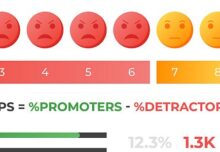Verbatims/ customer feedback can greatly enhance your products or services. But with so much feedback coming in from so many sources, it’s obvious to get perplexed and miss the most crucial ideas. That’s where structured feedback comes in!
Read on to understand the importance of organizing unstructured customer inputs for brand/marketing officers, customer experience officers, heads of digital and eCommerce product managers, online reputation managers, or someone who works in the context of customer experience. Explore suggestions and tactics you may employ to structure your text feedback and use the data to inform your choices.
The Power of Unstructured Customer Feedback: Why It’s Essential for Business Success
Unstructured customer feedback helps businesses better understand their customers’ needs, pain points, and preferences in specific areas of their business.

For example:
Heads of Digital and eCommerce can use unstructured feedback to identify user experience issues on their websites or mobile app, such as checkout difficulties or navigation problems. For example, “Back Home” was the dominant feedback for an e-commerce website. Customers would say, “If I’m checking my order, I have to go back to the home page”. “For some things you have to go right back home to get to it from somewhere else, which can be a bit annoying”.
Brand/Marketing Officers can use unstructured feedback to analyze customer sentiment around specific marketing campaigns, such as social media or email campaigns, to gauge their effectiveness. Let’s look at the Asian Paints YouTube campaign on “Where The Heart Is Season 2 Featuring Radhika Apte”. It had achieved 4.7 million views with 543 comments on the campaign. While the 4.7 million views are impressive, its comments uncovered finer nuances about the viewers.
The overriding topic was home and house (40%) with 25% loving the campaign and 17% thinking it was cute and beautiful. Only 8% mentioned actress Radhika Apte, and 2% recalled the brand name Asian Paints. So, if the campaign objective was to picture emotional feelings around the home, it had achieved its objective. Though the campaign needed a nudge to transfer the positive feeling toward sponsoring the brand Asian Paints.
Customer Experience Officers can use unstructured feedback to track customer satisfaction scores and identify areas of their customer service process that require improvement. Net Promoter Score classifies customers into Detractors, Passive, and Promoters. Which verbatims discriminate promoters from detractors will shortlist the touchpoints CX officers need to work with. For a Middle East Bank, “Reducing time to Activate card” followed by “Time for repatriation of funds” was determining whether consumers would continue to bank or not. It is pertinent to note that the touchpoints were gleaned from verbatims and not from structured pre-determined questions.
Product Managers can use unstructured feedback to gather insights into product design, usability, and features that customers want and need. A product manager is the person who identifies the customer need and the larger business objectives that a product or feature will fulfill, and articulates what success looks like for a product. The product manager needs to create a roadmap to align the design, engineering, and development teams on the features to be incorporated and tested.
The “Shift Left” philosophy talks of moving testing, quality, and performance evaluation early in the development process, often before any code is written. Shift-left testing helps product manager teams anticipate changes that arise during the development process that can affect performance or other delivery processes. Analyzing customer feedback verbatims is a key input to anticipate those changes.
By categorizing feedback into specific areas of their business, these professionals can prioritize improvements based on the insights they gather from unstructured customer feedback.
Expert guidance on structuring unstructured feedback –
How to structure unstructured customer feedback effectively?

Here are some tips businesses can use to structure qualitative customer feedback, so they can leverage it for better decision-making:
Categorize customer feedback: To make feedback easier to analyze, businesses should categorize feedback into specific areas of their business, such as user experience, marketing, customer service, or product design.
For example, a business that provides a mobile app can categorize its feedback into different areas of its business, such as user experience, marketing, customer service, or product design. By doing so, they can quickly identify which areas are performing well and which ones need improvement. For instance, if they notice that a lot of feedback is related to the app’s user interface, they can focus on improving that aspect of the app.
Similarly, if they receive a lot of feedback about poor customer service, they can take steps to improve the quality of their customer support. Categorizing feedback in this way can help businesses to prioritize their efforts and allocate resources where they are needed the most. Banks, Retail and Telecom have a evolving laundry list of “reason” codes where every feedback is bucketed. These reason codes run into thousands and different stakeholders are automatically notified about the feedback. For example ATM – Network issue (CIO), ATM – Cash availability (Operations Team), ATM Facilities (CXO).
Use sentiment analysis: Analyzing the sentiment behind feedback can help businesses identify areas of their business that are performing well and areas that require improvement.
For example, a brand/marketing officer may receive feedback that their latest marketing campaign was ineffective. By using sentiment analysis, they can identify whether the overall sentiment towards the campaign was positive, negative, or neutral. If the sentiment was mostly negative, the officer can focus on identifying the specific issues with the campaign and make improvements to future campaigns. On the other hand, if the sentiment was positive, they can explore how to replicate the successful aspects of the campaign in future marketing efforts.
Focus on vital metrics: CX professionals like CXOs and online reputation managers should select crucial measures that are critical to their company’s performance, such as rates of product uptake or customer satisfaction scores, and utilize these data to monitor development and assess success.
For instance, to measure the success of their online business, the Digital, and eCommerce Head might focus on important indicators like traffic to the website, rate of conversion, and the average value of orders. They may arrive at decisions based on data that encourage growth and enhance the customer experience by utilizing these metrics to assess the effects of adjustments done to the website or advertising strategies. Similarly, a Customer Experience Officer could concentrate on measures like net promoter rating or retention rates to determine how satisfied and devoted their clients are in general.
Utilise technology: Many tools are available in the market to help businesses make sense of customer feedback. These comprise software for managing customer reviews and sentiment analysis tools. These solutions enable companies to streamline the feedback process and gain the knowledge they require to succeed.
In order to understand the general feelings of consumers for their brand, organizations can gather, classify, and analyze feedback data from various sources with the aid of tools for sentiment analysis and feedback management. By utilizing these technologies, businesses may streamline the feedback process and get a deeper understanding of the wants and preferences of consumers, enabling them to make wise decisions to enhance their products and services.
The benefits of unstructured customer feedback
Better customer understanding: By categorizing and analyzing feedback, businesses can gain a better understanding of their customers’ needs, pain points, and preferences in specific areas of their business. This can help them to tailor their products and services to better meet customer needs and preferences.
Competitive advantage: By staying ahead of the competition and providing a better overall customer experience, businesses can gain a competitive advantage in their industry.
Improved decision-making: Unstructured customer feedback provides clear and actionable insights that businesses can use to make informed decisions about product development, marketing strategies, and customer service improvements.
Increased customer loyalty: By listening to and responding to customer feedback, businesses can build stronger relationships with their customers and increase customer loyalty.
Unstructured customer feedback is a powerful tool for businesses looking to improve their products and services. By “killing the verbatim” and structuring feedback in a way that makes it easy to analyze and act upon, businesses can better understand their customers’ needs, identify trends, and make informed decisions.
To make the most of unstructured customer feedback, businesses should follow the tips outlined in this article, including structuring feedback, using sentiment analysis, focusing on key metrics, and leveraging technology.
If you are interested in learning more about structuring unstructured customer feedback, we invite you to attend our upcoming webinar, ‘Bridging the insight gap from CX touchpoints to brand health and sales.’
Register now to gain valuable insights and actionable tips.







